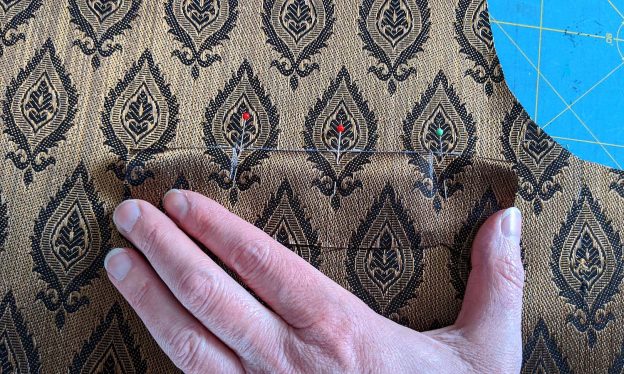19th century welt pockets where made different from modern welt pockets. In this tutorial I´ll show you the period correct method.
Baste a piece of linen or cotton to the wrong side of the left front, covering the pocket opening. Mark the pocket opening with a basting thread, clearly visible on the right side of the fabric. Cut your welt from fabric, matching the pattern of your fabric, with a 1/4” (6mm) seam allowance added to top and bottom and a 5/8″ (1,5cm) seam allowance added to the sides.
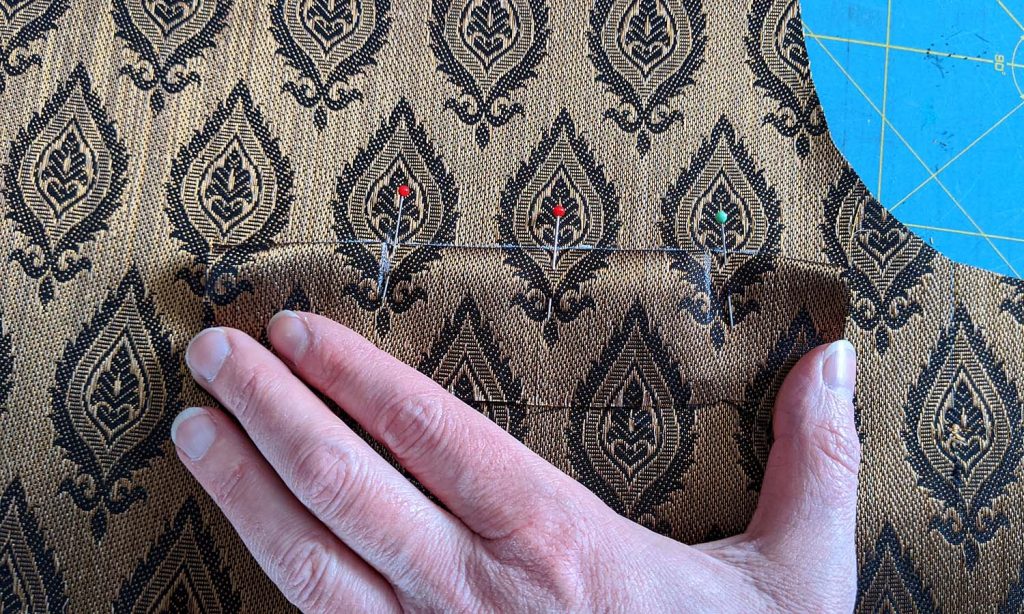
Fold the welt in half lengthwise, wrong sides together, press the edge and reopen. Attach a cotton tape along the fold to the inner half of the welt with a catch stitch. Sew the outer pocket bag to the inner half of the welt using, right sides together, stitch exactly between the marks of the pocket opening and press open the seam allowances.
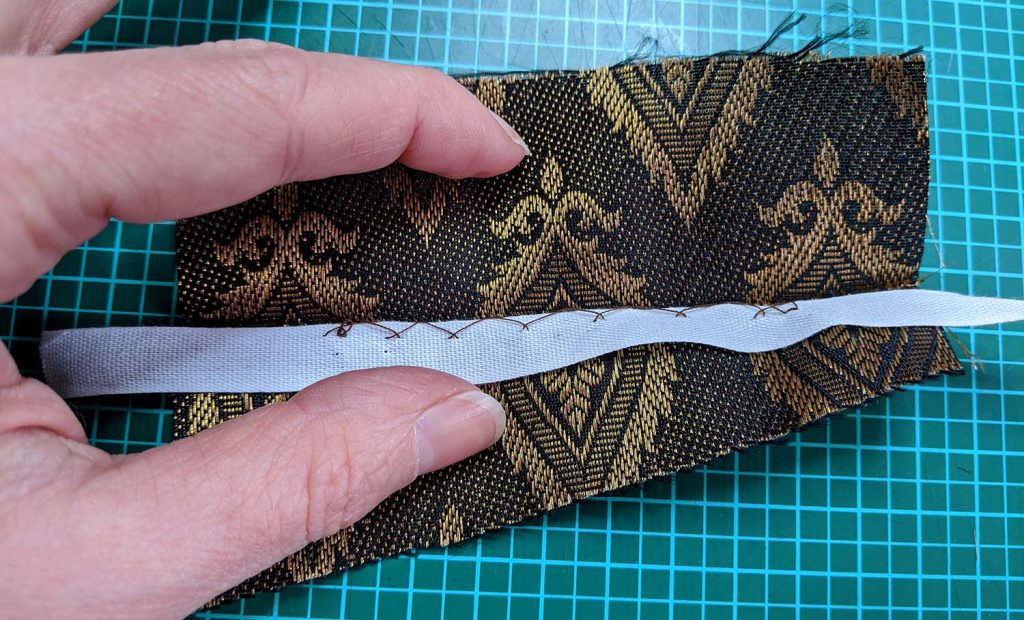
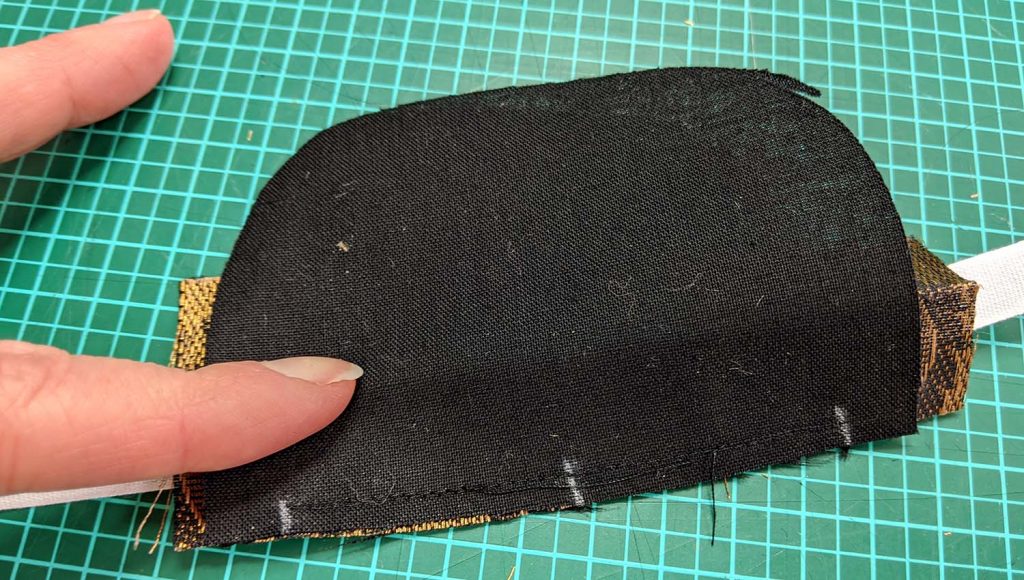
Place the front on a table with the right side up. From below, line up the edge of the outer welt half with the pocket opening, right sides together. Sew with a reduced stitch length exactly between the marks indicating your pocket opening, using a ¼” (6mm) seam allowance. From above, line up the inner pocket bag with the pocket opening, right sides together and sew with a ¼” (6mm) seam allowance. Start and stop about 1/8” (3mm) inside the pocket opeining marks.
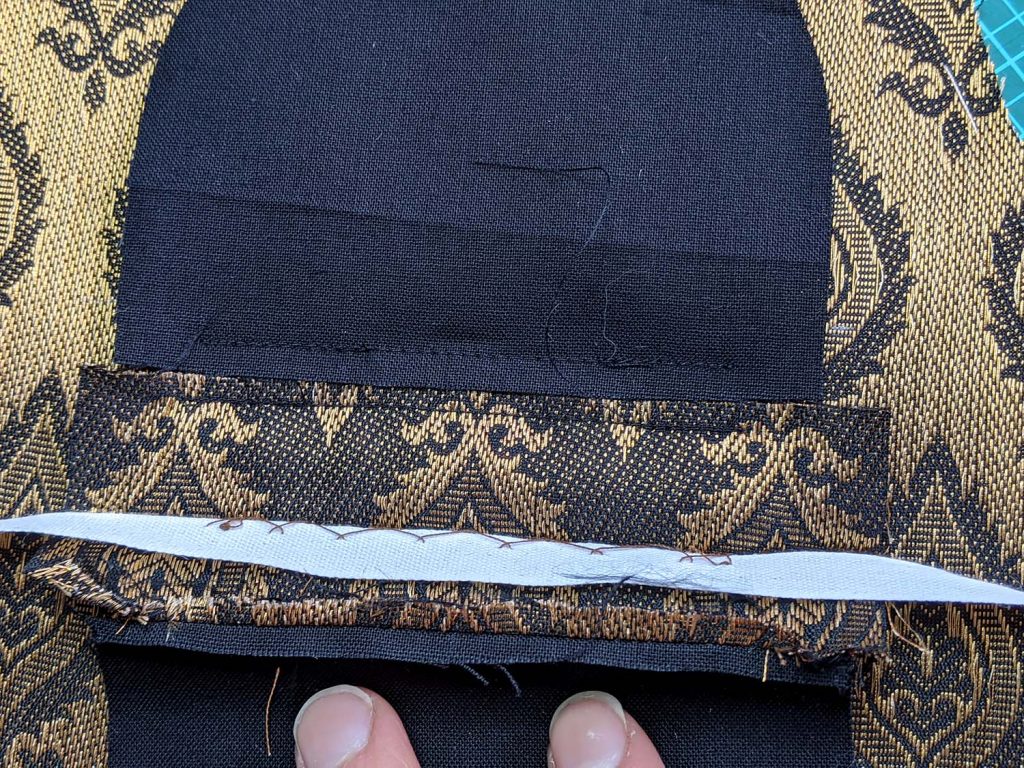
Turn the front to the wrong side and cut the fashion fabric in the middle of the stitching lines, cut V-shaped towards the corners. Pull the welt and outer pocket throught the opening to the wrong side and press the bottom edge of the welt carefully. Turn the welt along the fold line, wrong sides together. The welt seams should match up now, but most important is a regular welt on the right fabric side. From the right side, stitch (invisible) in the ditch of the welt seam, joining the layers.
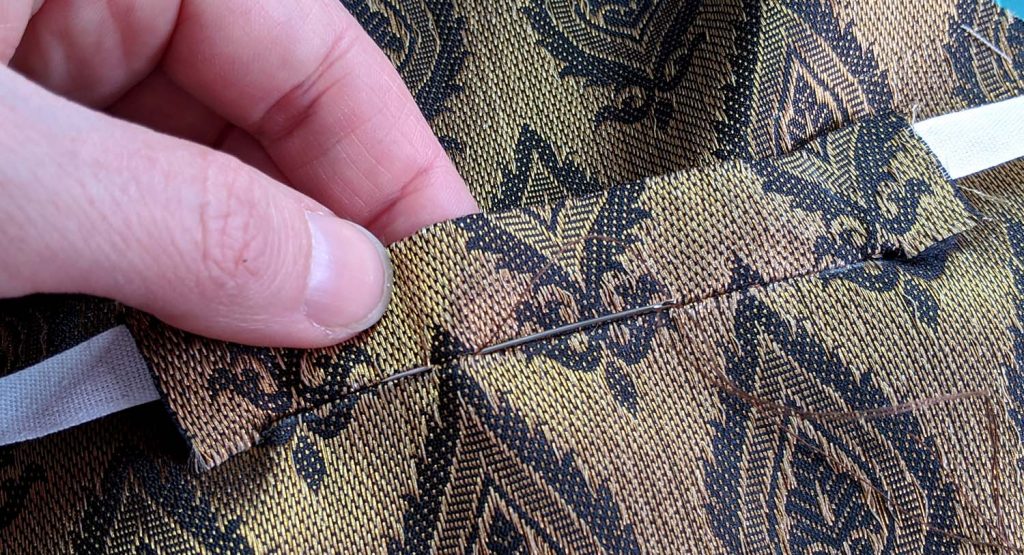
Pull the inner pocket bag to the wrong side and close the pocket, stitching the small triangles to the pockets.
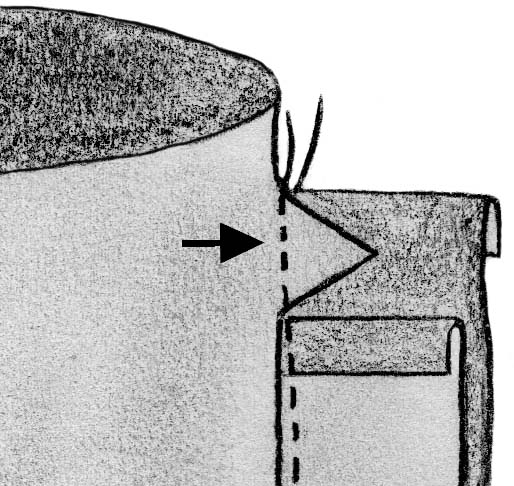
Finish the welts after basting the interfacing to the fronts. Turn the front right side up again and turn in the loose ends of the welt. Sew down the edges with a prick stitch through all layers, make a second row of prick stitches about ¼” (6mm) from the first. Trim back the turned in ends of the welt close to the second row of stitching.
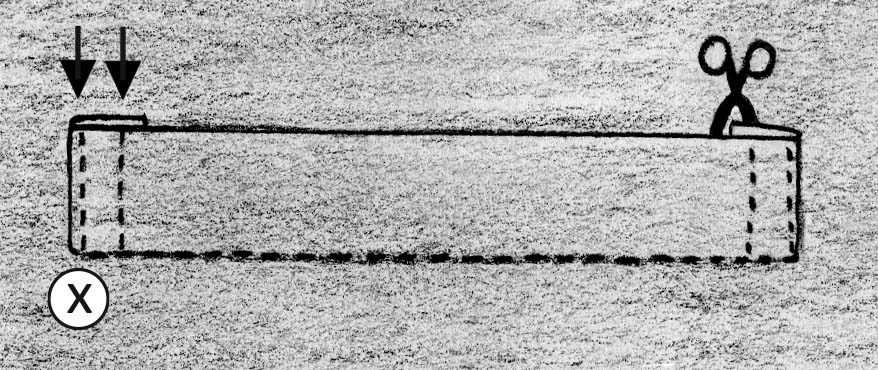
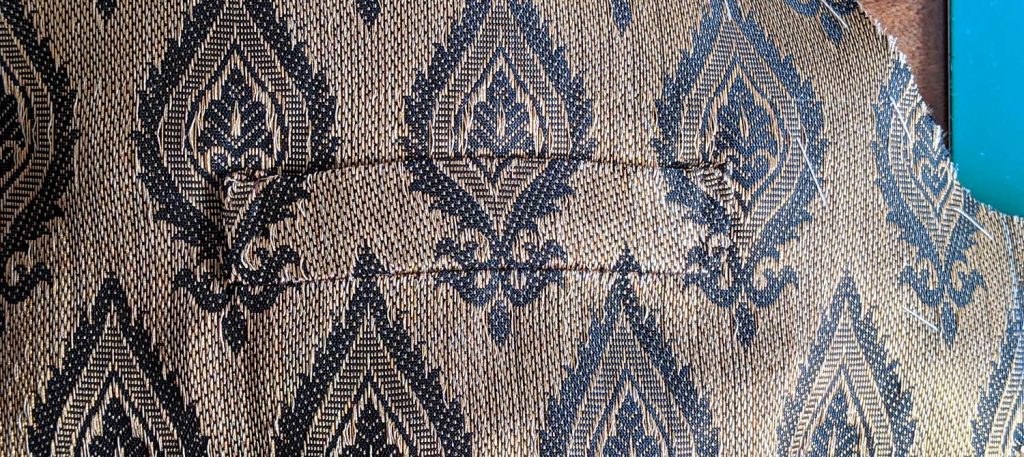
I konw, pattern matching ist not 100%, but good enough for me!

